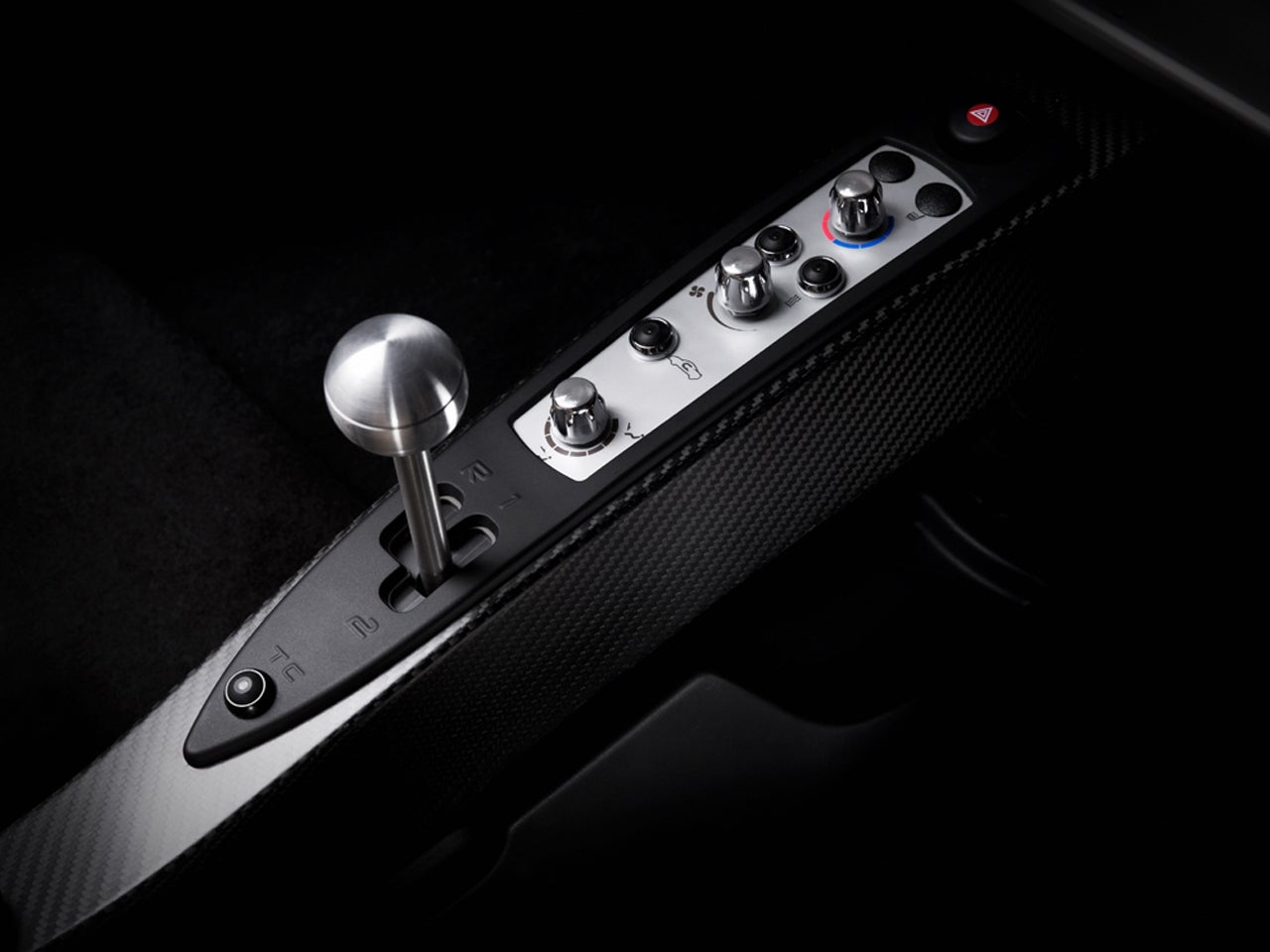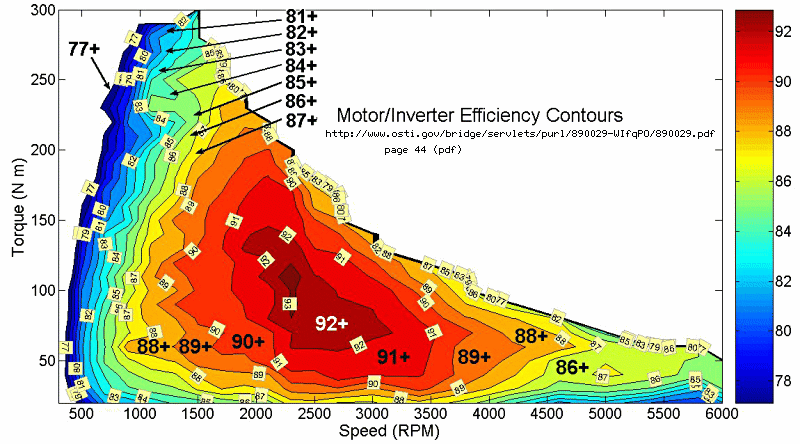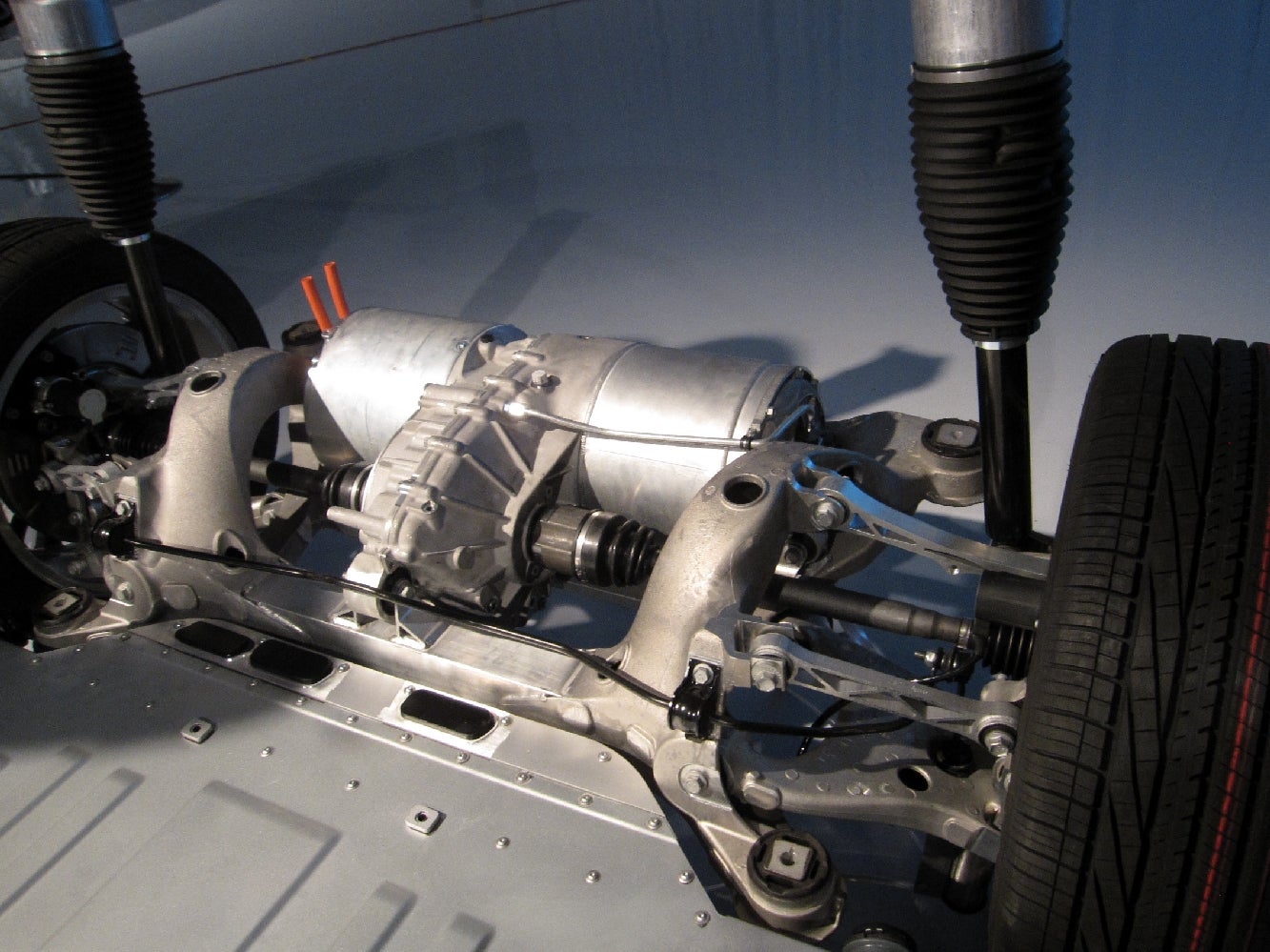 "HammerheadFistpunch" (hammerheadfistpunch)
"HammerheadFistpunch" (hammerheadfistpunch)
02/19/2015 at 12:05 • Filed to: None
 4
4
 10
10
 "HammerheadFistpunch" (hammerheadfistpunch)
"HammerheadFistpunch" (hammerheadfistpunch)
02/19/2015 at 12:05 • Filed to: None |  4 4
|  10 10 |

Talking about Lencos and funky transmissions got me thinking again about the Tesla 2 speed transmission in the roadster that never worked. Why not?
How hard could it possibly be to make a compact 2 speed planetary gearbox to withstand even as much as 700 ft-lbs of torque? Planetary gearsets are super strong and the shock loading on the gearsets its minimal with the brake dampening much of that force....I mean if you can throw all the power in the world through a manual lenco, how hard could it be?
I guess the other question is: is it worth it? I mean with gear reduction and modern motors it seems that performance from 0-100 is pretty great already and beyond that is pointless for most people.

Based on this efficiency map, I suspect that as long as the motor is cruising anywhere between 2000-3500 rpm it doesn't matter, but I feel like at freeway speeds you would be looking at 5000+, in which case a minor 2 speed planetary reducer might be worth it...unless the friction losses are more than 4-5% in which case its moot. I suppose, looking at the graph, that the real benefit would be to gear down even further, but have a reduced ratio for low speed, since high load, low rpm is the worst zone for efficiency.
 PS9
> HammerheadFistpunch
PS9
> HammerheadFistpunch
02/19/2015 at 12:09 |
|
So...according to this graph, when only 50ft-lbs of torque is being made between 1k-5k RPM, efficiency is always north of 80%? And nowhere on the graph is it lower than 77%??
Holy shit.
 HammerheadFistpunch
> PS9
HammerheadFistpunch
> PS9
02/19/2015 at 12:10 |
|
Electric motors are wicked efficient, too bad batteries are crazy bad in power density.
 PS9
> HammerheadFistpunch
PS9
> HammerheadFistpunch
02/19/2015 at 12:16 |
|

An electric car with a CVT could regularly break 90% efficiency in daily usage...
 HammerheadFistpunch
> PS9
HammerheadFistpunch
> PS9
02/19/2015 at 12:20 |
|
except CVT efficiency is actually quite poor, something on the order of 70-75%. The reason it works great in gas powered cars is because the gains in keeping the engine at peak BSFC are more than the losses of the CVT. In an Electric situation, you wouldn't have such big swings and it would be worse. Not to mention CVT's REALLY don't like torque.
 uofime
> HammerheadFistpunch
uofime
> HammerheadFistpunch
02/19/2015 at 12:30 |
|
it makes a lot of sense to ditch the transmission, depending on the specific numbers it is likely low rpm high load will never be used on a vehicle because there's a high probability of being traction limited. It also sounds reasonable that if you can maintain say 90% efficiency at regular highway speeds (75 if you're practical 55 if you're the EPA) that's good enough
 HammerheadFistpunch
> uofime
HammerheadFistpunch
> uofime
02/19/2015 at 12:32 |
|
it does beg the question when every mile of range matters...when is "good enough", good enough?
 JawzX2, Boost Addict. 1.6t, 2.7tt, 4.2t
> PS9
JawzX2, Boost Addict. 1.6t, 2.7tt, 4.2t
> PS9
02/19/2015 at 12:33 |
|
Electric motors: This Is Why.
 BoxerFanatic, troublesome iconoclast.
> HammerheadFistpunch
BoxerFanatic, troublesome iconoclast.
> HammerheadFistpunch
02/19/2015 at 12:39 |
|
Setting aside the fact that batteries are the weak link in any electric drive system, not the motors themselves... Just because the motor is capable, doesn't mean the battery can sustain the electrical demand, or for how long.
What that efficiency graph doesn't show, though, is electric current demand at higher RPMS. Just because it is efficient at turning current into kinetic energy, doesn't mean it isn't THIRSTY for amperage, or how much heat it is generating, even if it is a low loss percentage, it could still potentially be a damaging amount of heat.
I am not sure why the 2-speed gear set didn't work in the tesla roadster, or what it's failure particularly was... but theoretically it should't be a big problem, so it is likely an implementation issue.
a 2-speed axle differential has been done before. I can imagine that new technology could implement it again, as a shift-on-the-fly, computer-controlled arrangement, even with a system like Model S's rear axle.

 uofime
> HammerheadFistpunch
uofime
> HammerheadFistpunch
02/19/2015 at 12:42 |
|
yeah, that's one of, probably the tougher parts of design. What are the requirements?
here you'd probably end up in market analysis then doing some cost-benefit analysis maybe the gear-set costs 500$ and adds 100lbs but and they found they could add 200$ and 30lbs of batteries and better the range on their designed efficiency test
 kanadanmajava1
> HammerheadFistpunch
kanadanmajava1
> HammerheadFistpunch
02/19/2015 at 13:32 |
|
I have driven with an electric VW Passat that had 5-speed manual gearbox. It wasn't born as an electric car but one local company had converted to electric drive.
It was pretty fun to drive but it was really hard not to touch the clutch when you were stopping or accelerating from stand still. Basically the 5-speed gearbox wasn't necessary but it was easier to left it there as it contained the differential too.
Btw. The Lenco boxes are nearly useless in any other purpose but drag racing. The racing version doesn't even have a neutral position. They did street version too but even that is hard to drive as the transmission freewheels in every other gear but with the highest. So if the engine slows down you have to get the speed up really carefully or you will damage the sprag clutches. And the reverse lever is also a self destruction switch. If you touch while the car is moving reversing part explodes.